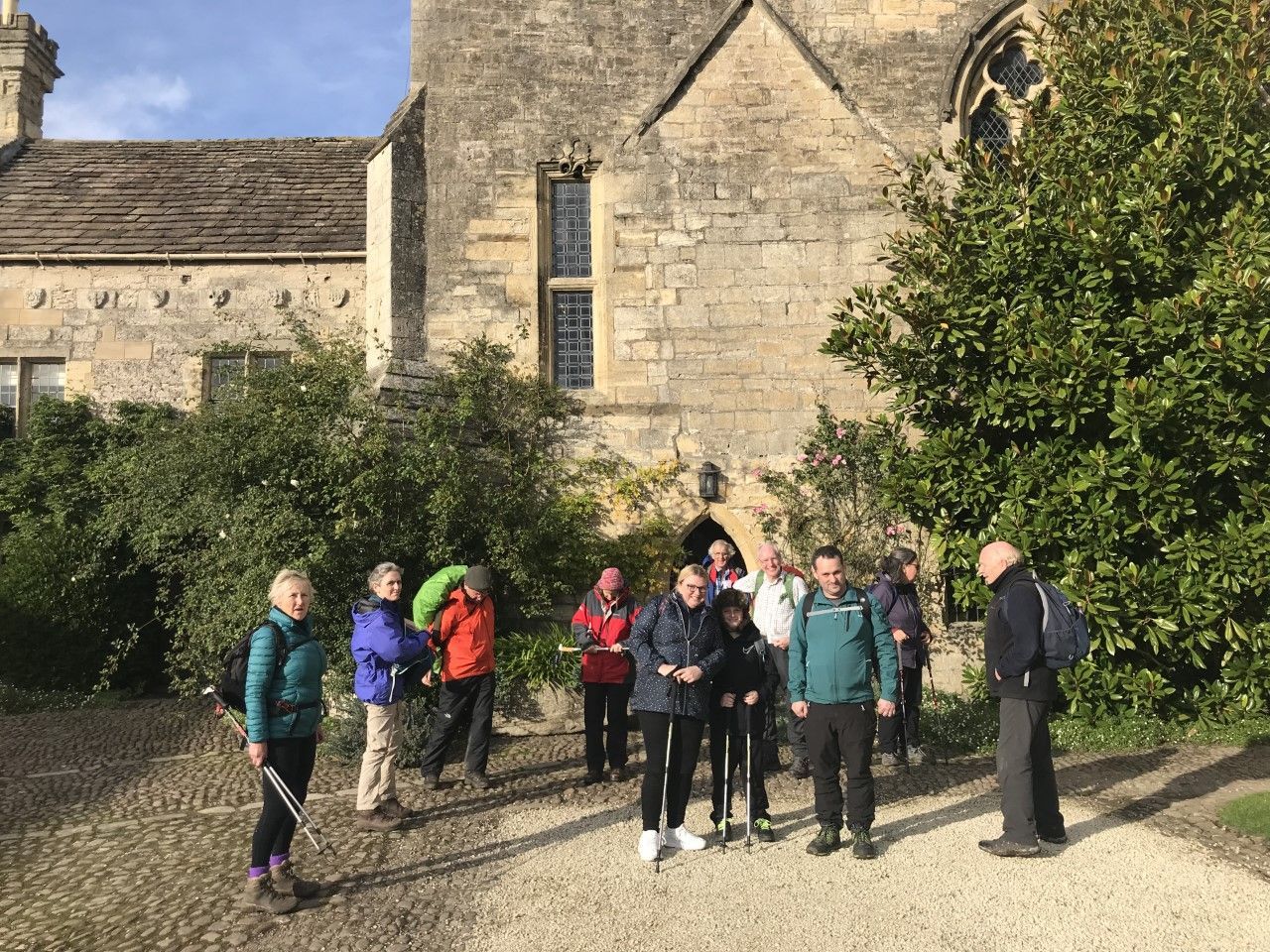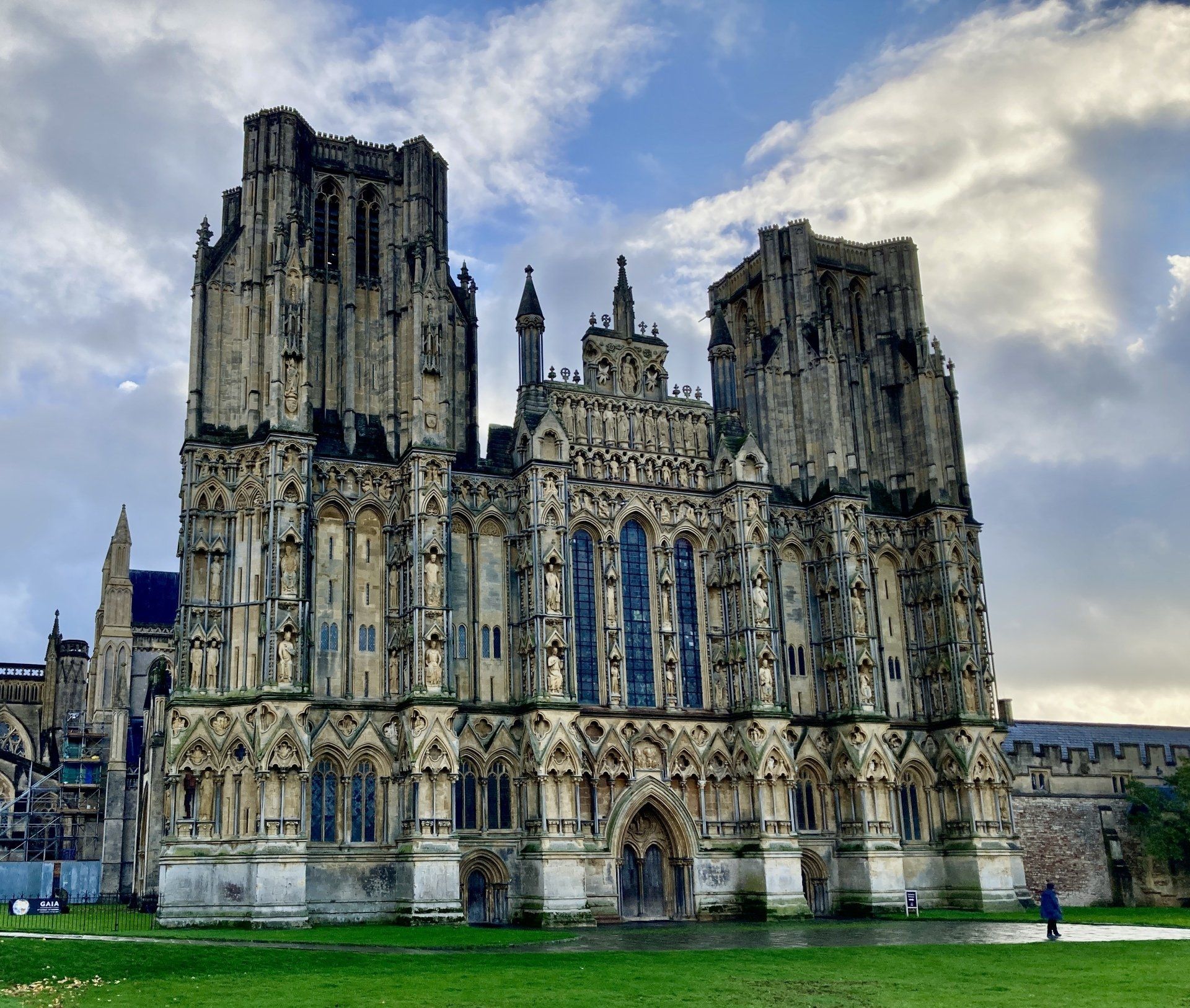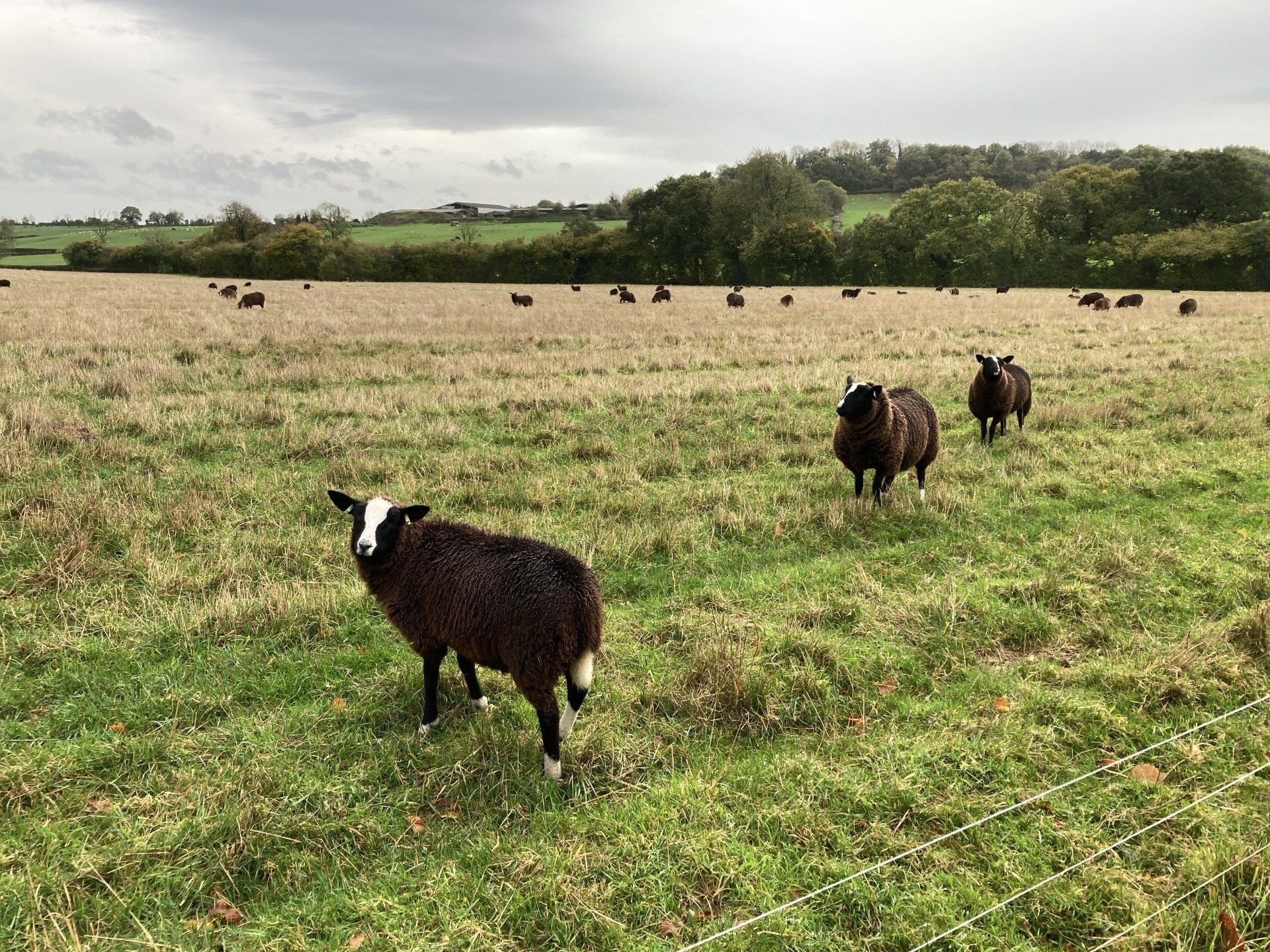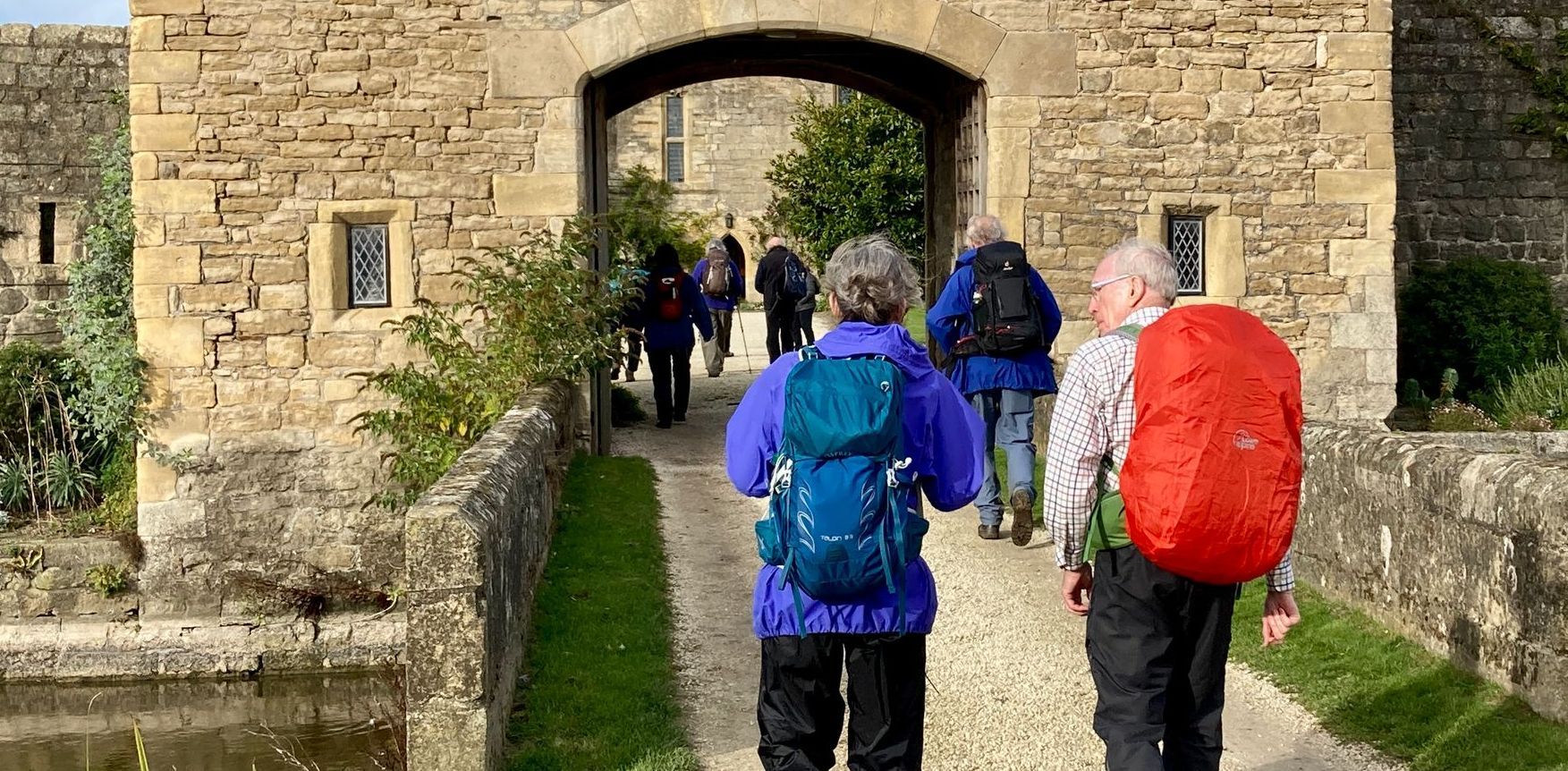The Whiting Way
A Pilgrim Way for the Diocese of Clifton from the Cathedral of SS Peter & Paul in Bristol to the site of the martyrdom of Blessed Richard Whiting and the Shrine of Our Lady of Glastonbury
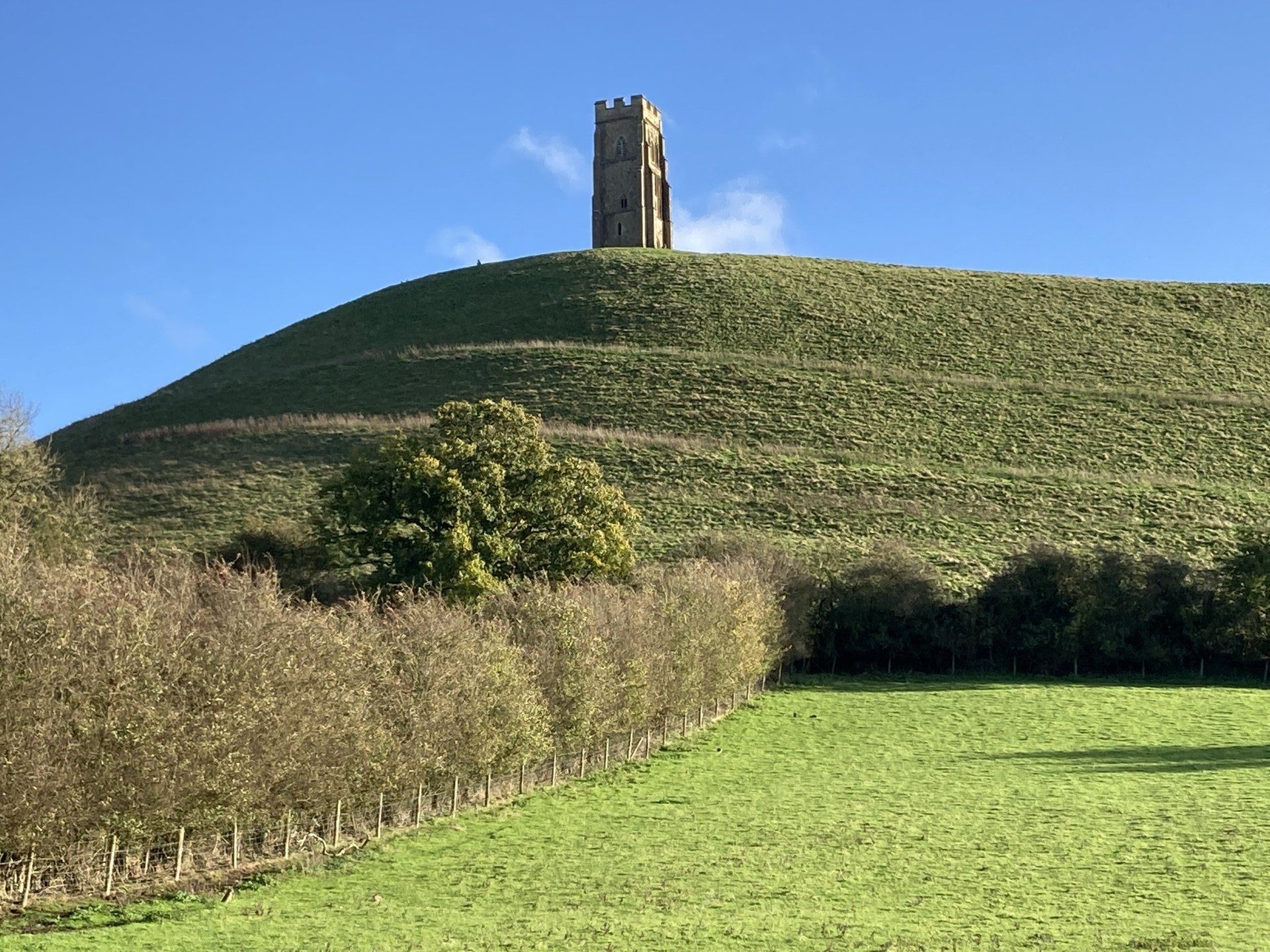
Glastonbury Tor
About the route
The pilgrimage visits the site of the martyrdom of Blessed Richard Whiting, the last Abbot of Glastonbury, and two of his monks, John Thorne and Roger James. The monks were beatified by Pope Leo XIII in 1895. It's a good place to say a prayer for Christian unity.
The Way leaves Bristol over the famous Clifton Suspension Bridge, then through parkland and beside the ring road until it climbs to Dundry. The path then descends to Chew Magna, where the Church of the Sacred Heart is visited. The Way passes on over the Mendips to reach the Church of SS Joseph & Teresa at Wells and Wells Cathedral. The route continues, following the Monarch’s Way, then over quiet countryside before climbing the spectacular Glastonbury Tor. There is a final descent to reach the ruins of Glastonbury Abbey and the Shrine of Our Lady of Glastonbury in St Mary's Church.
You can find out more about the Way and download the GPX file by clicking on the LEARN MORE tab in the
interactive map below
Guidance
Using the tabs in this section you can find the information you need for your pilgrimage.
The Outer Way provides practical advice about the route.
The Inner Way describes the spiritual highlights.
Using the button below you can download details of the inner and outer ways and the walking guidance and maps.
Stages: route, food & drink, accommodation and public transport
1. Clifton Cathedral to Dundry: 5.91 miles
Clifton Cathedral can be reached by buses from the city centre or a train to Clifton Down station. The Way leaves the Cathedral, crosses Clifton Down and leaves the city over the historic Suspension Bridge. The route continues through Ashton Court Estate, then along paths parallel to the ring road to reach the A38 where there is a pub. The path then ascends to the village of Dundry, with fine views back to Clifton. There is a pub in Dundry which also provides accommodation, and there are occasional buses to Bristol. A more frequent bus service runs along the A38.
2. Dundry to Chew Magna: 3.41 miles
From Dundry the Way heads south-east through quiet farmland to descend to the charming village of Chew Magna. Here there are several pubs, café’s, restaurants and accommodation. On the outskirts is the modern Catholic Church of the Sacred Heart. There are buses back to Bristol.
3. Chew Magna to Compton Martin: 5.89 miles
The Way veers to the west across farmland to reach the Monarch’s Way, where it turns south to reach the village of Compton Martin where there is a pub, accommodation and buses.
4. Compton Martin to Wells: 10.14 miles
The Way climbs to the top of the Mendips and descends to reach Wookey Hole where there is a pub and buses. The Way then crosses more farmland to reach the City of Wells, the Catholic Church of SS Joseph & Teresa and Wells Cathedral. There are pubs, restaurants, accommodation and buses in Wells.
5. Wells to Glastonbury: 11.73 miles
The Way continues to follow the Monarch’s Way to exit Wells on the south side to reach the village of North Wooton where there is a pub. After a flat section the route climbs Pennard Hill and turns west to West Pennard where there is a pub. After a section across flat farmland the Way climbs to the top of Glastonbury Tor before descending to Wells to reach the ruins of Glastonbury Abbey and the Shrine of Our Lady of Glastonbury. There are pubs, accommodation and buses in Wells.
Public transport links
Trains:
https://www.nationalrail.co.uk/
Buses:
Pilgrim Places
The Clifton Diocesan Pilgrimage to Glastonbury
In 1895 the Diocese of Clifton held a pilgrimage to Glastonbury to celebrate the beatification of Blessed Abbot Richard Whiting and his Companions, on the anniversary of their martyrdom. Thousands of pilgrims from all over the country arrived by train and climbed the Tor where Mass was said. Pilgrimages took place after both World Wars by pilgrims in thanksgiving for their survival. Today the Diocese of Clifton holds an Annual Pilgrimage to Glastonbury, led by the Bishop in July. There is Exposition of the Blessed Sacrament in the Shrine church, the Sacrament of Reconciliation and Private Healing Prayer are available, followed by a Rosary procession in the Abbey grounds and a pilgrimage Mass.
The Cathedral of Saints Peter & Paul, Clifton
The Cathedral was consecrated in 1973. From the outside it is perhaps an alarming concrete intrusion into genteel Clifton, but inside it is an extraordinary space, airy, plain and light. It was the first cathedral to be conceived and built in England after the Second Vatican Council and 1,000 people can participate in the liturgy and all be close to the high altar. The concrete stations of the cross begin with the Last Supper, take us through the events of Jesus’s passion and death as recorded in the scriptures, and end with the risen Christ breaking bread with his disciples. Before you start your pilgrimage, take a few moments to follow and reflect on the stations of the cross. What crosses are you carrying? We all stumble along our ways through life, and we may find ourselves the object of ridicule and pity. How will your pilgrimage change you?
The Church of the Sacred Heart, Chew Magna
Catholicism survived in the Chew Valley during penal times due to the faithfulness of the local Beaumont and James families and an early chapel was built in 1806. In 1940 Chew Magna Manor House was purchased by the Sisters of Our Lady of the Missions, initially as a reception centre for wartime evacuees. The Sisters still own the site of the current church, which was opened in 1964. It is a simple prefabricated structure, but inside there are oak benches from a convent in Henbury, Bristol, and Stations of the Cross from a convent in Wigan, reminders of its links with women religious. The Sacred Heart is one of the most widely practised Catholic devotions, in which the heart of Jesus symbolises God's boundless love for all humanity. There are times in all our lives when we feel abandoned by God, but when in your own life might you have experienced His love, perhaps without being aware of it at the time?
The Church of SS Joseph & Teresa, Wells
This church was built as the chapel for a Carmelite convent which was based in the adjacent house between 1875 and 1972. The design of the west front on to the street is said to be based on that of the Slipper chapel at Walsingham with the crest and motto of the Carmelite Order in the gable. The motto means: ‘I am full of zeal for the Lord God of Hosts’. Zeal for the things of this world, like money, power and sex, is easy to understand and recognise in ourselves and others. How would it be to live zealously for the One who is beyond these things?
Wells Cathedral
In 705 CE an abbey was built in Wells, dedicated to St Andrew. The first bishop of Wells was Athelm (909). Work is thought to have started on the Cathedral in about 1175, but the seat and title of the bishop fluctuated until 1245 when Pope Innocent IV established the title as the ‘Bishop of Bath and Wells’. The Cathedral is an early example of the English Gothic style and the west front with its 300 statues is stunning. It survived the Dissolution of the Monasteries relatively well, but during the English Civil War (1642–1651) the stonework was damaged by fighting and the Dean was imprisoned and then murdered by his gaoler. In 2021 a cast iron sculpture of an abstracted human form made by Antony Gormley was unveiled on the west front. It is titled DOUBT and will remain in place until February 2023. Gormley, who was raised a Catholic, said: "I am very aware of the paradox of placing an object called DOUBT on the façade of a building devoted to belief, but it seems to me that doubting, interrogating, questioning, are all part of belief. For me doubt can be a positive force and the imaginative engine of future possibility." What part does doubt play in your own faith journey?
Glastonbury Tor
Glastonbury Tor is a natural sandstone hill although the terraces on the slopes are man-made. It is steeped in legend, especially the stories of King Arthur, and archaeological excavations have found artefacts from the Iron Age to Roman eras. There seems to have been several buildings on the summit during the Saxon and early medieval periods, perhaps an early church and hermitage. The original wooden church was destroyed by an earthquake in 1275, and 14th century stone Church of St Michael was demolished during the Dissolution of the Monasteries in 1539 and only the tower survives.
The Tor is the site of the martyrdom of Richard Whiting, the last Abbot of Glastonbury Abbey, and two of his monks. Whiting assented to Henry VIII’s Act of Supremacy in 1534, but in September 1539 Royal Commissioners arrived to bring about the Abbey's closure. They were disappointed by the amount of treasure to loot and the elderly, frail Whiting was arrested. The charge is uncertain, but Thomas Cromwell interrogated him in the Tower of London and recorded: ‘Item: The Abbot of Glaston to be tried at Glaston and also executed there with his accomplices.” Whiting was sent back to Wells where a show trial was held. He was convicted of ‘robbing Glastonbury church’, which was what Cromwell had done on behalf of the Crown. Whiting with two of his monks, John Thorne and Roger James, were fastened upon hurdles and dragged by horses to the top of Glastonbury Tor where they were hanged, disembowelled, beheaded and quartered. Whiting's head was fastened over the west gate of the now deserted abbey and his limbs exposed at Wells, Bath, Ilchester and Bridgwater. The three monks were beatified by Pope Leo XIII in 1895.
Ruins of Glastonbury Abbey
There was a Romano-British church dedicated to Our Lady on the site of Glastonbury Abbey in the 6th Century. During the Saxon period the Abbey flourished but was destroyed by a major fire in 1184. It was rebuilt, and by the 14th century it had become one of the richest and most powerful monasteries in England. The Abbey was suppressed during the Dissolution of the Monasteries and fell into ruin. The site was purchased by Anglican Diocese of Bath & Wells in 1908 and is now in the care of a charitable trust. The Glastonbury area has long been associated with the legends of King Arthur and of Joseph of Arimathea. King Arthur’s burial site is claimed to be within the ruins and, a thorn tree in the grounds is said to have originated from Joseph of Arimathea’s staff.
Shrine of Our Lady of Glastonbury in St Mary’s Church
There is evidence that Our Lady continued to be venerated at Glastonbury during penal times, but in 1925, a small church was built. In 1939 the foundations of a new church were laid, dedicated to Our Lady and across the road from the ruined Abbey. In 1955, a statue of Our Lady was blessed by the Apostolic Delegate, and the Shrine of Our Lady St Mary of Glastonbury was restored. In 1965 the statue was crowned, a mark of the special importance of Our Lady of Glastonbury. Today the shrine is well visited and there is the Annual Diocesan Pilgrimage described above.
Clifton Diocesan Prayer
God our father, open the horizons of our minds and hearts so that we can see what hope your call holds for us.
Pour out the overflowing gifts of your Spirit so that we, your Church, may become a people of hope for our world.
We ask you this, through Jesus Christ Our Lord, who lives and reigns with you in the unity of the Holy Spirit, one God for ever and ever.
Amen.
Our Lady, Woman of Hope, pray for us
St Peter, Rock of Hope, pray for us
St Paul, Apostle of Hope, pray for us”
ABOUT THE DIOCESE OF CLIFTON
The Diocese of Clifton is the Catholic diocese covering the West of England and includes the City and County of Bristol, the counties of Gloucestershire, Somerset, Wiltshire, North Somerset, South Gloucestershire and Bath and North East Somerset.
There are 107 parishes within 13 deaneries serving a Catholic population of around 190,000. Around 33,000 people attend Mass around the diocese every weekend. More than 2,000 people are actively involved in Catholic associations in the diocese.
